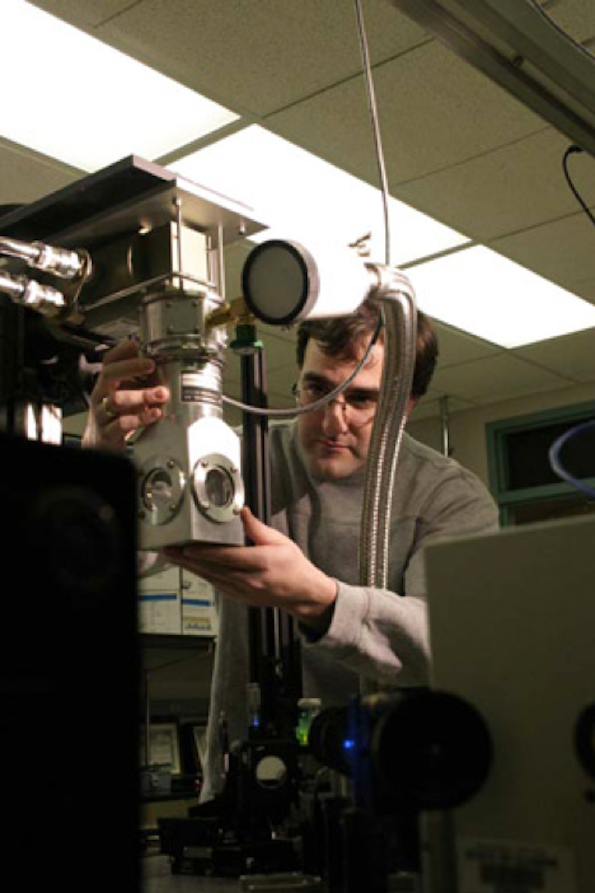Using nanostructures to reveal the inner working of cells
Using nanostructures to reveal the inner working of cells

Most of us remember drawing a cell diagram in middle school biology: the nucleus, an exterior membrane, and to fill out the interior, cytoplasm. The cytoplasm we drew was often nondescript and uniform, but in reality, these cellular regions are extraordinarily complex—a fact that researchers at the intersection of bioengineering and electrical engineering are investigating to learn how information travels within and between cells.
Distinguished Professor Michael Stroscio is on the cutting edge of that effort at UIC, working in collaboration with Bozhi Tian, a chemistry professor at the University of Chicago. Supported by a grant from the U.S. Army Research Laboratory, they are running experiments and formulating theories to investigate the cellular role of liquid condensates, dense areas of biomolecules that populate the cytoplasm in a similar way that clouds float in the sky.
Stroscio, a faculty member with a dual appointment in electrical and computer engineering and bioengineering, is using nanostructures to understand how liquid condensates evolve, how they carry information, and how they interact in cells. The electrical and computer engineering field is generating a great deal of knowledge about nanostructures, and this project is applying that knowledge to help reveal the inner functioning of biological cells.
“Having nanostructures opens a lot of possibilities,” Stroscio explained. “The cell exists on the scale of microns, and the nanostructures are about a thousand times smaller. We can use these smaller nanostructures to probe the processes occurring inside of the cells.”
Stroscio will use nanostructures to change the conditions in a cell: either by raising the internal temperature or creating an electrical field. The nanostructures will do their work in close proximity to the liquid condensates that the researchers are interested in understanding.
What are nanostructures like? Consider the quantum dot, which is 10 nanometers in diameter and functions like a tiny light bulb, giving off light in a particular color when excited by the presence of an external laser. Biomolecules, like the ones found in liquid condensates, can be bound to these luminescent quantum dots, effectively creating a nanosensor that can detect different substances within a cell.
Stroscio said the purpose of this research is to build general knowledge that could point toward specific applications down the road. Research with nanostructures could easily be applied to learn about parts of a cell beyond liquid condensates, too, such as organelles or ion channels.
The total grant for the research is nearly $800,000 to the University of Chicago; UIC’s portion is just over $160,000. Mitra Dutta, also a distinguished professor in the electrical and computer engineering department, is contributing as a volunteer consultant on the project.